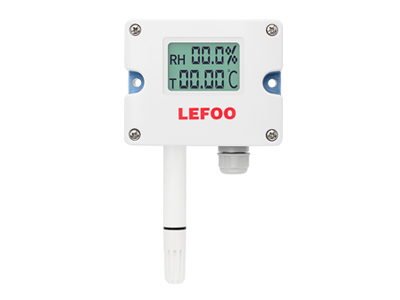Most Popular
When choosing a temperature and humidity sensor, there are the following considerations:
Like measuring weight and temperature, selecting a pressure temperature sensor must first determine the measuring range. Except for meteorological and scientific research departments, high temperature and humidity measurement and control generally do not require full humidity range (0-100%RH) measurement.
The measurement accuracy is the most important indicator of the humidity sensor. Every percentage point increase is a step up, or even a higher level, for the humidity sensor. Because to achieve different precision, the manufacturing cost is very different, and the price is also very different. Therefore, users must tailor their clothes, and should not blindly pursue "high, refined, and sharp". If the humidity sensor is used at different temperatures, its indication value should also consider the influence of temperature drift.
It is well known that relative humidity is a function of temperature, and temperature strongly affects the relative humidity in a given space. The temperature changes every 0.1°C. A humidity change (error) of 0.5%RH will occur. If it is difficult to achieve a constant temperature in the application occasion, it is inappropriate to propose an excessively high humidity measurement accuracy. In most cases, if there is no precise temperature control method, or the measured space is not sealed, the accuracy of ±5%RH is sufficient.
For local spaces that require precise control of constant temperature and humidity, or where it is necessary to track and record humidity changes at any time, choose a humidity sensor with an accuracy of more than ±3%RH. And the requirement that the accuracy is higher than ±2%RH may be difficult for even the standard humidity generator to calibrate the sensor, let alone the sensor itself. Relative humidity measuring instrument, even below 20~25℃, it is still very difficult to achieve the accuracy of 2%RH. Usually the characteristics given in the product data are measured at normal temperature (20℃±10℃) and in clean gas.
In actual use, due to the influence of dust, oil and harmful gases, the electronic humidity sensor will be aged and the accuracy will decrease after a long time of use. The annual drift of the electronic humidity sensor is generally about ±2%, or even higher. Under normal circumstances, the manufacturer will indicate that the effective use time of one calibration is 1 year or 2 years, and it needs to be re-calibrated when it expires.
The temperature and humidity sensor is not hermetically sealed. In order to protect the accuracy and stability of the measurement, it should be avoided as much as possible in acidic, alkaline and organic solvent-containing atmospheres. Also avoid using it in a dusty environment.
In order to correctly reflect the humidity of the space to be measured, it is also necessary to avoid placing the sensor too close to the wall or in a dead corner where the air is not ventilated. If the room being tested is too large, multiple sensors should be placed.
Some humidity sensors have relatively high requirements on the power supply, otherwise the measurement accuracy will be affected. Or the sensors interfere with each other or even fail to work. In use, a suitable power supply that meets the accuracy requirements should be provided according to the technical requirements.
When the sensor needs to perform long-distance signal transmission, pay attention to the attenuation of the signal. When the transmission distance exceeds 200m, it is recommended to select a humidity sensor with a current output signal.
More Related Products

 English
English  français
français  Deutsch
Deutsch  Español
Español  italiano
italiano  русский
русский  português
português  العربية
العربية  Türkçe
Türkçe  Zulu
Zulu 